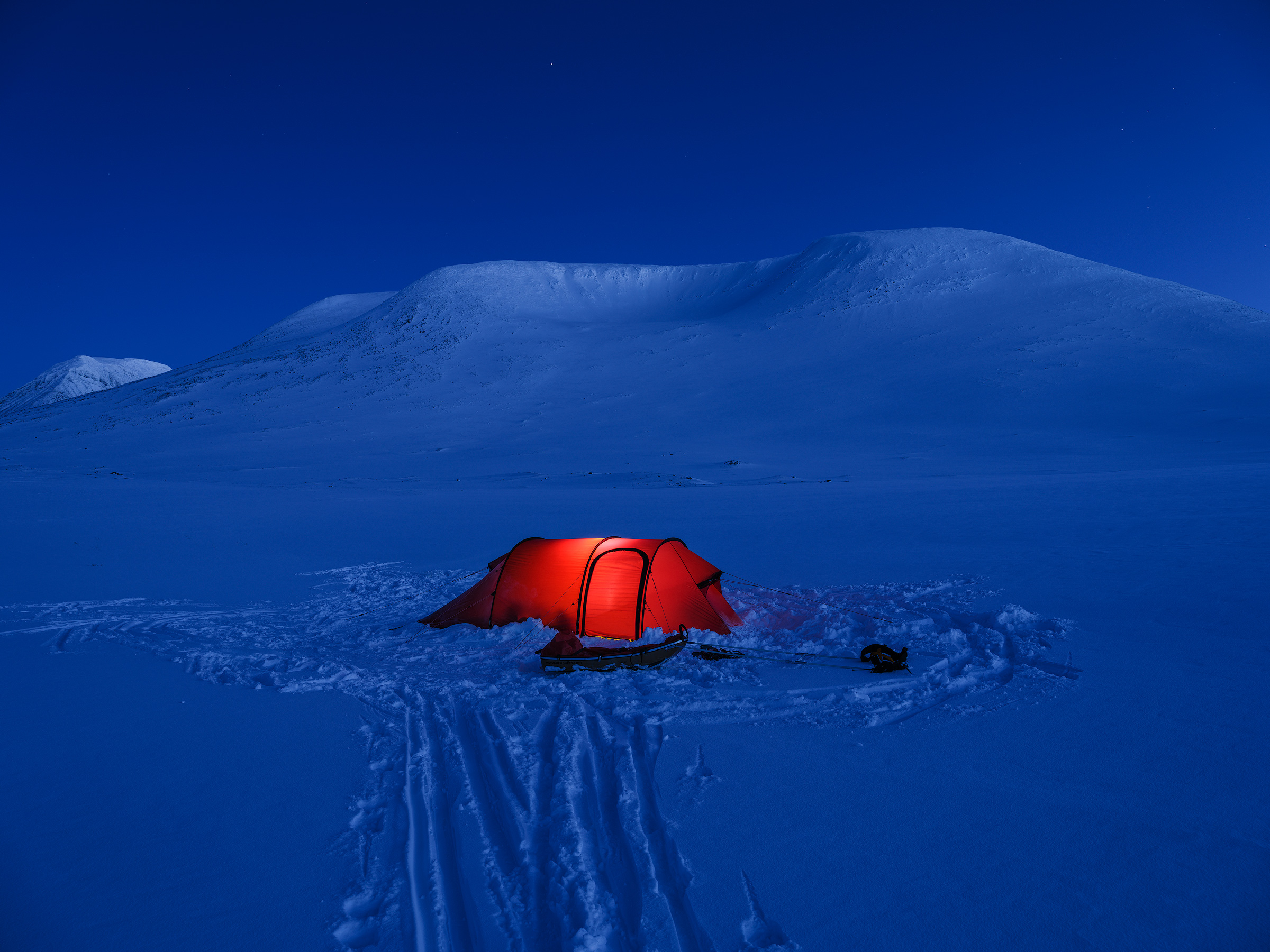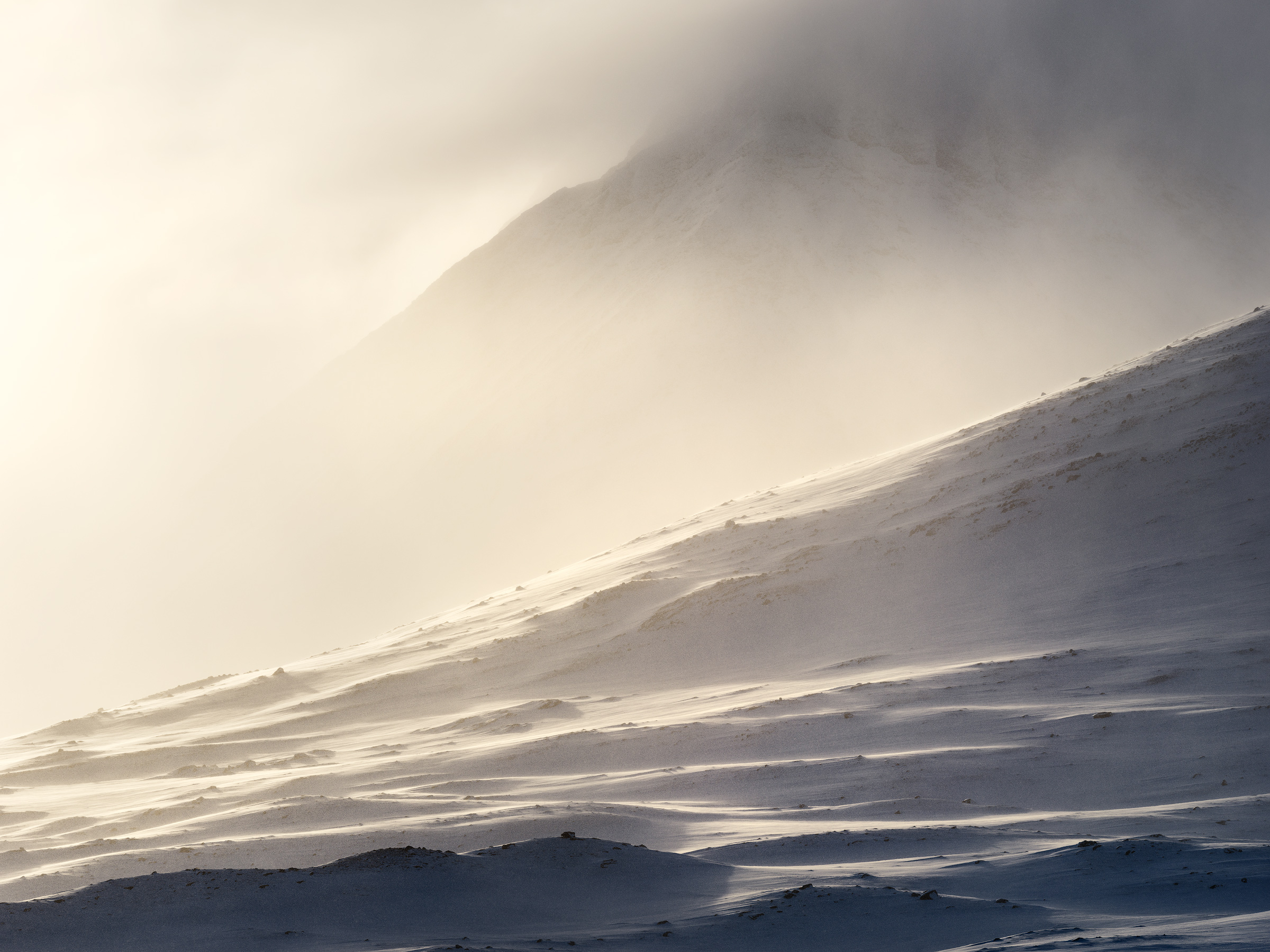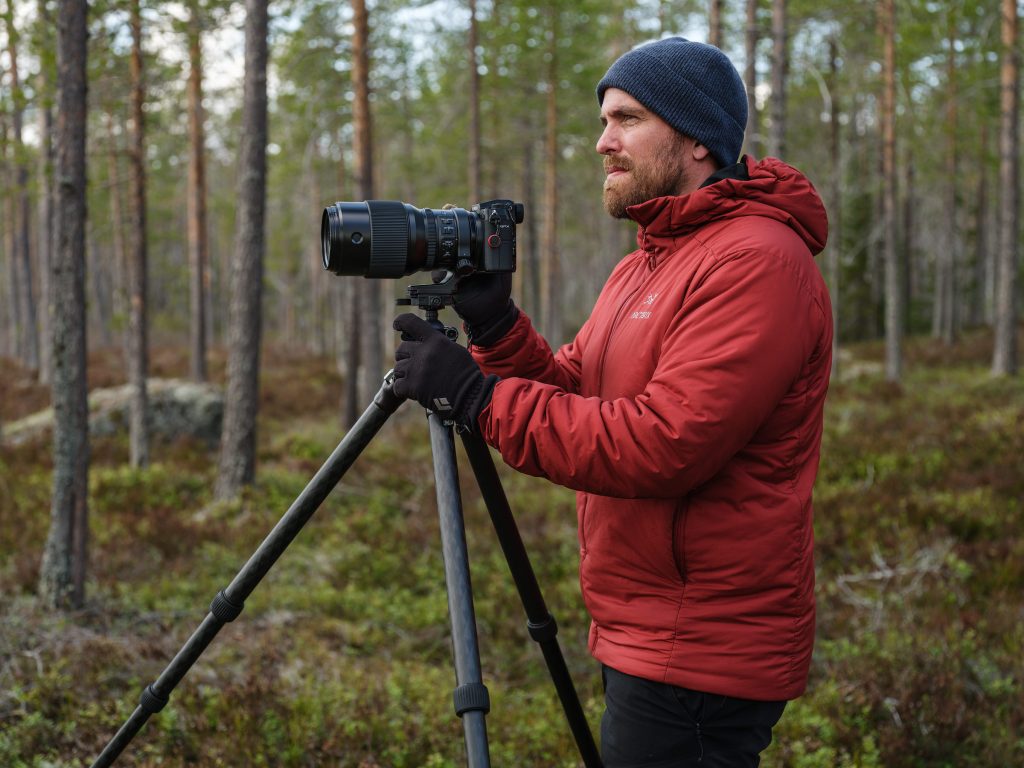
For the last two weeks this has been my home. I’ve been out, once again, exploring the winter mountains of Sarek with my camera.
For me an adventure like this is not about getting from point A to B nor is it about climbing mountains to check them off my bucket list. When I set out with my heavy pulk full of winter equipment, two weeks of food and extensive camera gear I do so to work on my art.
I’m out here to portray the mountains of Sarek and its ever changing light. I constantly search for that next photograph. Paying attention to the light and the lines and shapes of the mountain landscape.
For each adventure I try to come up with new ideas. As a photographer it’s easy to fall into old habits. It can of course be good to continue to work with what you already know well but I always search for new ways of photographing the mountains.
On this adventure I had deliberately kept my planning to a minimal. I only had a rough plan and a basic route on the map. My goal this time was to challenge myself to find new directions for my photography. After almost 20 years of photographing in the mountains of Sarek it’s easier said than done.
This time I would let the mountains guide me.

My adventure began in very cold weather with temperatures as low as minus 27 degrees Celsius and it took a few days for me to adapt to the cold.
One of the most common questions I get is how I deal with batteries in such cold conditions. I guess this is a question that everyone can relate to, but there are other more important duties to take care of when being out on the winter mountain.
One of them is to keep your equipment dry – especially the sleeping bag. During cold nights moisture from your body will freeze inside the sleeping bag and if you don’t dry it out it will loose its insulating properties.
If I’m lucky to have sun on a rest day the best way to dry gear is inside the inner tent where you can trap the warmth of the sun. I take every opportunity I can to keep my gear in the best possible condition throughout an adventure. This mindset of always being proactive has kept me out of trouble in many situations over the years.
Another challenge I face is to keep my spirit and motivation up. When the weather is fine and conditions for photography are good it’s not a problem. But when weather turns bad and I haven’t had any luck with photography for days or even weeks – it’s easier said than done.
Feelings get multiplied when you’re out alone. The mountains get higher and the valleys deeper.
During my second week in Sarek the mountain winds picked up. High winds are usually the photographers worst enemy and in winter they can be brutal, but the wind can also bring beauty to the mountain landscape.

The photograph above is an example of a new kind of image that I came back with from this adventure. The spindrift created by the wind and the golden backlight of the rising sun composed with a telephoto lens. Instead of cursing the wind I saw it as an opportunity to create an evocative image.
I think this is how you evolve as a photographer. The possibilities for new work are out there – but we need to be open minded and embrace them to find new paths forward in our creative lives.
/ Magnus
Want to learn more about Winter Adventures? Check out my brand new Winter Adventure Series – now available for Supporters!






